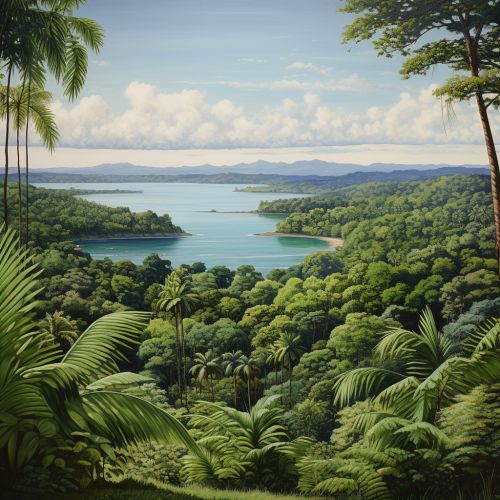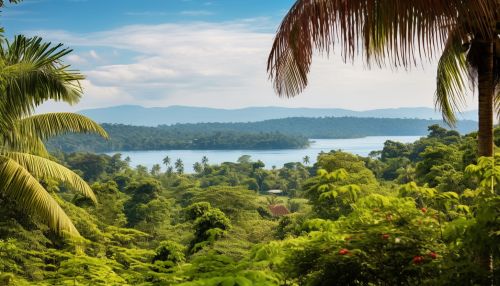Isthmus of Panama
Geography
The Isthmus of Panama, also known as the Panama Isthmus, is a narrow strip of land that connects North and South America. It separates the Atlantic Ocean (via the Caribbean Sea) from the Pacific Ocean. The Isthmus of Panama is approximately 80 kilometers wide at its narrowest point. This geographical feature is significant due to its influence on global climate, oceanic currents, and biodiversity.


Geological History
The formation of the Isthmus of Panama is a subject of ongoing scientific research. The most widely accepted theory is that it formed approximately 3 million years ago during the Pliocene Epoch. This formation resulted from tectonic and volcanic activity, as the Cocos Plate and the Caribbean Plate collided. The emergence of the isthmus had profound effects on Earth's climate and environment, a phenomenon known as the Great American Biotic Interchange.
Climate
The Isthmus of Panama has a tropical climate, characterized by high temperatures and high humidity throughout the year. It has two distinct seasons: the dry season (December to April) and the wet season (May to November). The climate is influenced by the Intertropical Convergence Zone, a belt of low pressure that circles the Earth at the Equator.
Biodiversity
The Isthmus of Panama is renowned for its high biodiversity. It is home to many species of plants and animals, some of which are endemic to the region. This high level of biodiversity is attributed to the Great American Biotic Interchange, which allowed species from North and South America to migrate and mix.
Human History
The Isthmus of Panama has been inhabited by humans for thousands of years. The earliest known inhabitants were the Cuevas and the Coclé cultures. In the 16th century, the isthmus was discovered by Europeans during the expedition of Christopher Columbus. It later became a key transit route during the California Gold Rush.
Modern Significance
Today, the Isthmus of Panama is best known for the Panama Canal, a man-made waterway that connects the Atlantic and Pacific Oceans. The canal has had a significant impact on global trade and transportation. The isthmus is also important for its biodiversity and is a focus of ongoing conservation efforts.
